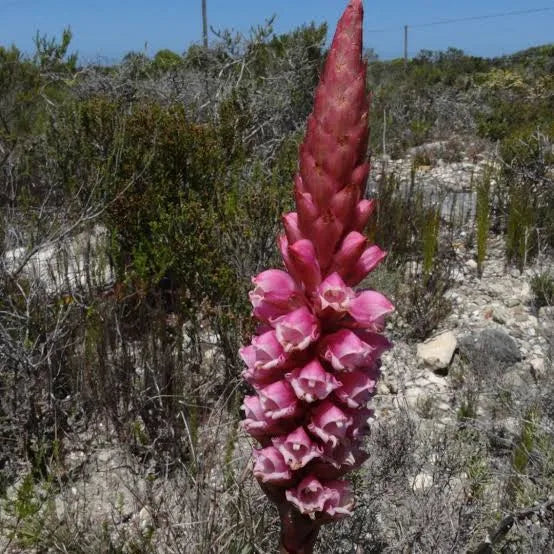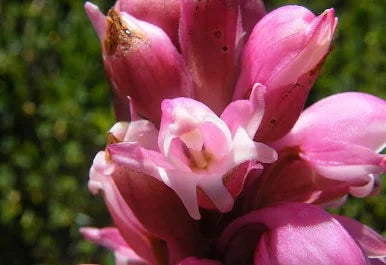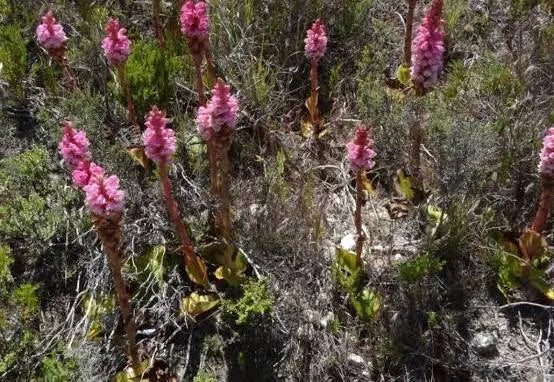Satyrium carneum
Satyrium carneum
Couldn't load pickup availability
Satyrium carneum, commonly known as the pink satyr orchid or rooikappie, is a terrestrial orchid species endemic to the southwestern Western Cape province of South Africa. It is a robust plant known for its striking, dense spikes of pink, rose, or sometimes white flowers.
- Flowers: The numerous, hooded flowers are arranged in a dense raceme at the top of a stout stem, which can reach a height of 30 to 70 cm. Each flower features two horn-like spurs and a helmet-shaped lip.
- Leaves: The plant has two to four fleshy, basal leaves that are often pressed partly to the ground. There are smaller, sheathing leaves higher up the stem.
- Blooming season: S. carneum flowers in the spring and early summer, typically between September and November.
- Habitat: This orchid grows in coastal fynbos and dune-bush vegetation, thriving on moist to dry sands and limestone. It is often found in coastal hills and on ridges at altitudes of 10 to 300 meters.
- Distribution: Its range extends from the Cape Peninsula eastwards to Riversdale and Sedgefield.
- Endemism: It is an endemic South African species, meaning it is not found anywhere else in the world.
-
- Growth cycle: As a winter-rainfall species, the plant is dormant during the dry summer. New growth begins in the autumn, with flowering occurring in the spring.
- Propagation: Propagation can be challenging and is typically done through specialized techniques like tissue culture. It is not recommended for novice gardeners.
- Basic care: For those with experience, the plant requires a cool environment and acidic, well-draining soil. It needs regular watering during the growing season but should not be overwatered.
Price is for 5 seeds



Collapsible content
Fair Use Disclaimer
Our website may contain content not authorized for use by its owner but use of this material falls under the guidelines of fair use (They are for educational purposes only to show the plant only).
If you want to find our more or own any images displayed on our website and disagree with our assessment it constitutes 'fair use' please click here.



